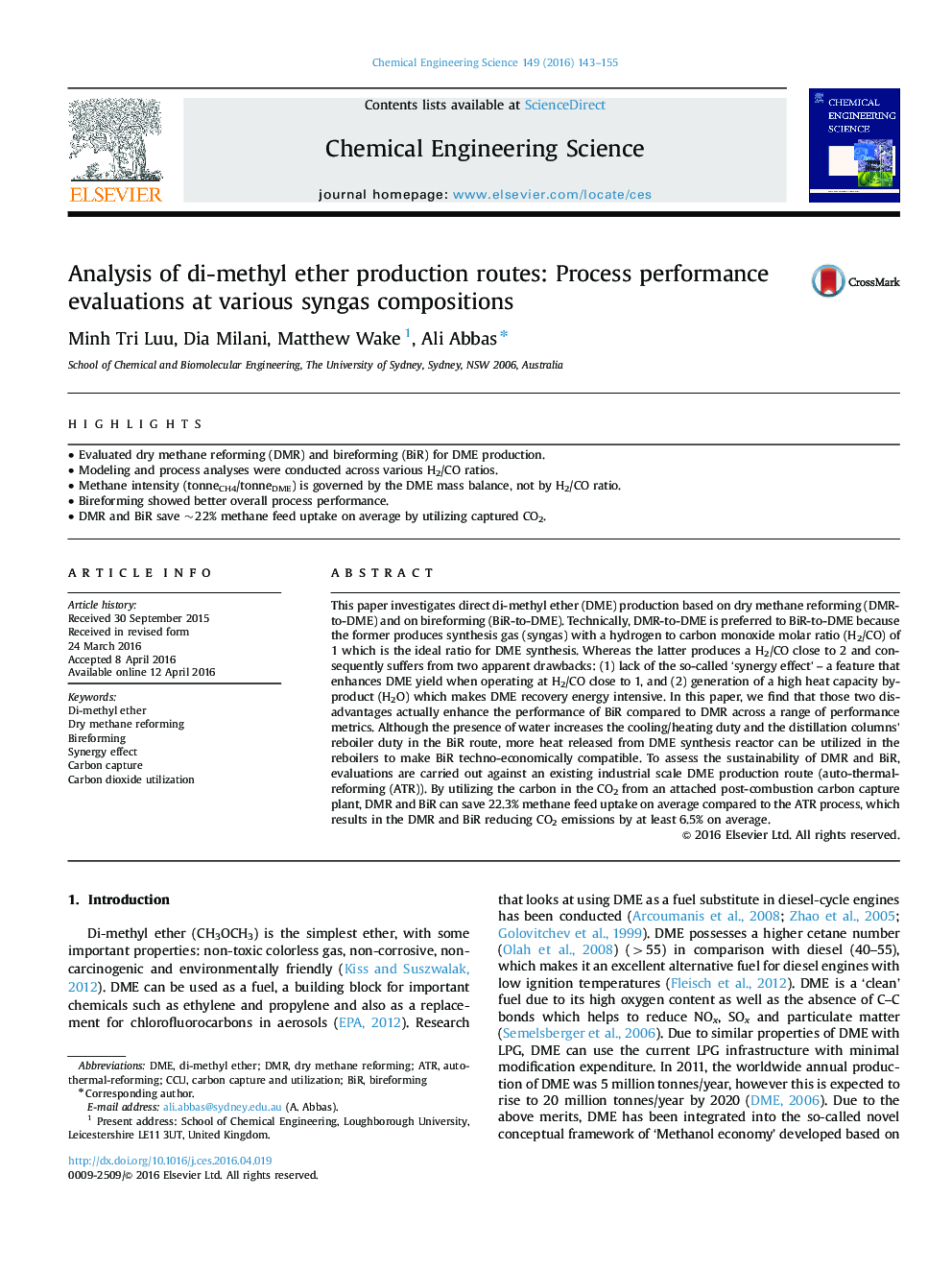| Article ID | Journal | Published Year | Pages | File Type |
|---|---|---|---|---|
| 6589112 | Chemical Engineering Science | 2016 | 13 Pages |
Abstract
This paper investigates direct di-methyl ether (DME) production based on dry methane reforming (DMR-to-DME) and on bireforming (BiR-to-DME). Technically, DMR-to-DME is preferred to BiR-to-DME because the former produces synthesis gas (syngas) with a hydrogen to carbon monoxide molar ratio (H2/CO) of 1 which is the ideal ratio for DME synthesis. Whereas the latter produces a H2/CO close to 2 and consequently suffers from two apparent drawbacks: (1) lack of the so-called 'synergy effect' - a feature that enhances DME yield when operating at H2/CO close to 1, and (2) generation of a high heat capacity by-product (H2O) which makes DME recovery energy intensive. In this paper, we find that those two disadvantages actually enhance the performance of BiR compared to DMR across a range of performance metrics. Although the presence of water increases the cooling/heating duty and the distillation columns' reboiler duty in the BiR route, more heat released from DME synthesis reactor can be utilized in the reboilers to make BiR techno-economically compatible. To assess the sustainability of DMR and BiR, evaluations are carried out against an existing industrial scale DME production route (auto-thermal-reforming (ATR)). By utilizing the carbon in the CO2 from an attached post-combustion carbon capture plant, DMR and BiR can save 22.3% methane feed uptake on average compared to the ATR process, which results in the DMR and BiR reducing CO2 emissions by at least 6.5% on average.
Related Topics
Physical Sciences and Engineering
Chemical Engineering
Chemical Engineering (General)
Authors
Minh Tri Luu, Dia Milani, Matthew Wake, Ali Abbas,
